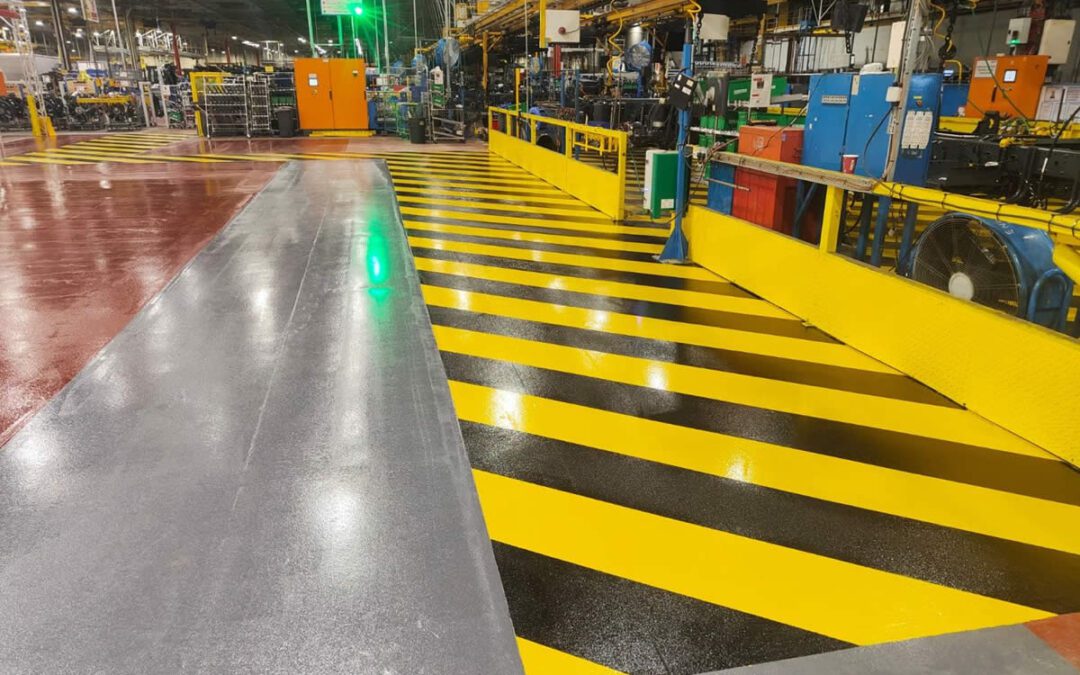To the untrained eye the application of resin looks fairly simple, however there Is much more to it than meets the eye when it comes to epoxy resin flooring finish…
Preparation is everything…
No matter how good the product if the subfloor is not prepared correctly then the resin flooring system will not last as long as it should.
As part of the preparation, it is important to remove all dust, dirt and contaminates from the floor and open the pores of the substrate. We usually use either a shot blasting machine or a diamond grinding machine for this. Afterward, we thoroughly vacuum any residue or dust.
Once the floor is clear, we decide whether it needs a primer and determine the appropriate type. We use different primers for various applications: a DPM (Damp proof membrane) for floors with residual moisture or an OCS primer (solvent-free, low-odor epoxy resin primer/membrane) for oil-contaminated floors.
If the preparation stage is not done correctly before applying any type of resin flooring system, then the flooring system may not adhere correctly to the substrate and overtime delaminate.
Follow the manufacturer’s instructions.
The most common reason that resin doesn’t cure correctly is not measuring the ratio of resin to hardener accurately. Always follow the manufacturer’s directions, as each manufacturer is slightly different and the resin will react accordingly.
Temperature
Resin is fickle… It doesn’t like it too hot, and it doesn’t like it too cold. If temperature is too cold, (below 10 degrees) resin will not cure properly – the cold temperature retards the activator working correctly and hence the resin will not cure. If the temperature is too warm, then the resin can cure too quickly which makes it hard to work with and can cause marks. The ideal ambient working space temperature for resin is 14 degrees C and hence during the colder months it may be necessary to bring in heaters to warm the space.
It’s good to note – If the building has been vacant for some time with not heating, the concrete slab will be cold which means that when the resin hits it it brings the temperature of the resin down.
Curing time
It is important to leave enough time for the resin to cure before using it. You can tell that the resin floor has cured because you will no longer be able to dent it with your thumbnail into the resin. At this point, the epoxy has reached most of its ultimate strength, so it’s fine to walk on – approximately 24 hours drying time for Foot traffic use and 48 hours for forklift use.
Note that walking on the resin before it fully cures will embed the dirt from your shoes into the resin permanently.
The right product for the right job
Choosing the correct resin product is key – there is no “one size fits all” solution. Every working environment has its limitations, so choose the correct type of flooring system accordingly. There are many different options from coating systems right the way through to screed systems.
Our staff have over 30 years’ experience in laying resin flooring systems at PSC Flooring so we are happy to talk through the different options available.





